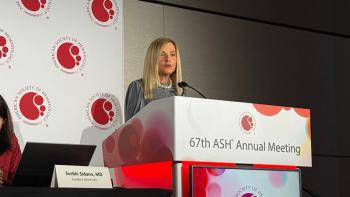
Secondhand Smoke Exposure Drops by Half Since 1999, but Disparities Seen
Children, the poor, African Americans, and those living in rental housing remain at higher risk of exposure to secondhand smoke, which CDC says kills 41,000 nonsmoking adults and 400 infants a year.
Indoor smoking bans have worked wonders for protecting non-smokers from the dangers of secondhand smoke, according to a new report from the CDC. But not all groups have seen the same degree of improvement, with the poor, children, African Americans, and those who live in rental housing still at higher risk of harm from others’ smoking, the report found.
declined from 52.5% during 1999—2000 to 25.3% during 2011–2012.
The study, led by David M. Homa, PhD, examined National Health and Nutrition Examination Survey (NHANES) data from 1999-2012 to gauge secondhand smoke exposure among those age 3 or older. Researchers found that exposure However, exposure was highest among children ages 3-11 years (40.6%), non-Hispanic blacks (46.8%), persons living below the poverty line (43.2%), and those living in rental housing (36.8%).
Among children ages 3-11 years, 67.9% of non-Hispanic blacks were exposed to secondhand smoke, compared with 37.2% of non-Hispanic whites and 29.9% of Mexican Americans.
The harmful effects of exposure to secondhand smoke from cigarettes has been documented by CDC for decades, and was suspected shortly after the seminal report,
Subsequent reports outlined how secondhand smoke causes sudden infant death syndrome, respiratory infections, ear infections, and asthma attacks in infants and children. Adults face risks of coronary heart disease, stroke, and lung cancer, which has prompted efforts to ban smoking in restaurants and casinos to protect workers. According to CDC, no risk-free level of secondhand smoke exposure exists.
“Secondhand smoke exposure causes more than 41,000 deaths among nonsmoking adults and 400 deaths in infants each year, and approximately $5.6 billion annually in lost productivity,” yesterday’s report states. “Although population exposure to secondhand smoke has declined over the past 2 decades many nonsmokers remain exposed in workplaces, public places, homes, and vehicles.”
The first indoor smoking ban was adopted in Berkeley, California in 1977, but the movement picked up steam in 1986 when then-US Surgeon General C. Everett Koop reported to Congress that simply separating smokers and nonsmokers was insufficient to protect nonsmokers from the harmful effects of tobacco smoke. Major victories came in the late 1980s, when then US Senator Frank R. Lautenberg, D-NJ, eliminated smoking from domestic airline flights of less than 2 hours, and then less than 6 hours. The law left the door open for airlines to completely ban smoking themselves, and eventually all airlines did.
Eliminating smoking in multi-family dwellings is considered the “next frontier” in efforts to control tobacco, and an earlier CDC study reported in The American Journal of Managed Care found that banning smoking from all subsidized housing would save an estimated $521 million a year, including $341 million from Medicare and Medicaid alone.
Some municipalities in California have weighed ordinances to ban smoking from multi-unit dwellings, since smoke cannot be completely eliminated from ventilation systems.
Around the Web
California Smoke Free Laws Go Mainstream
Newsletter
Stay ahead of policy, cost, and value—subscribe to AJMC for expert insights at the intersection of clinical care and health economics.









































